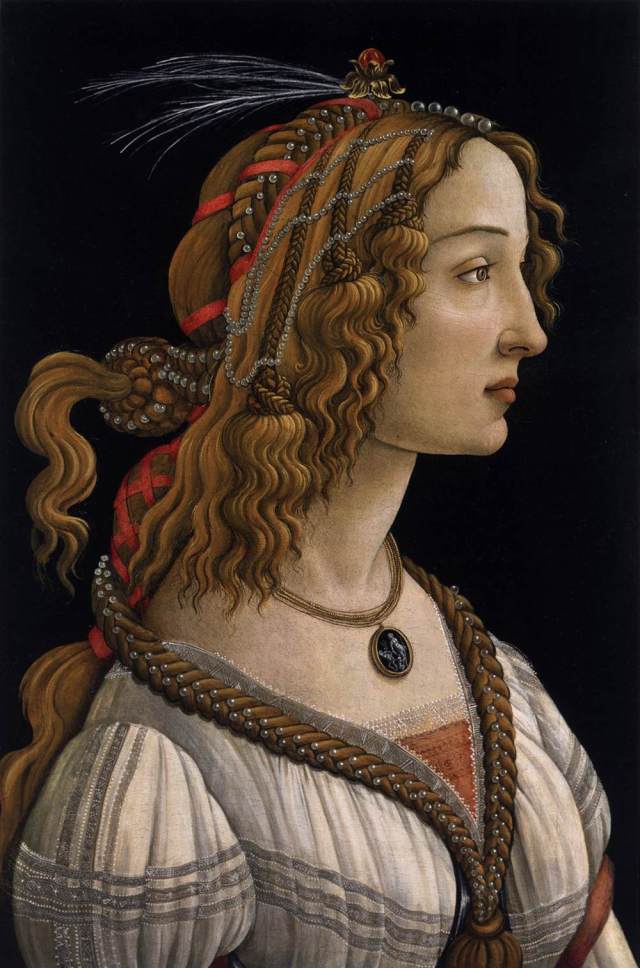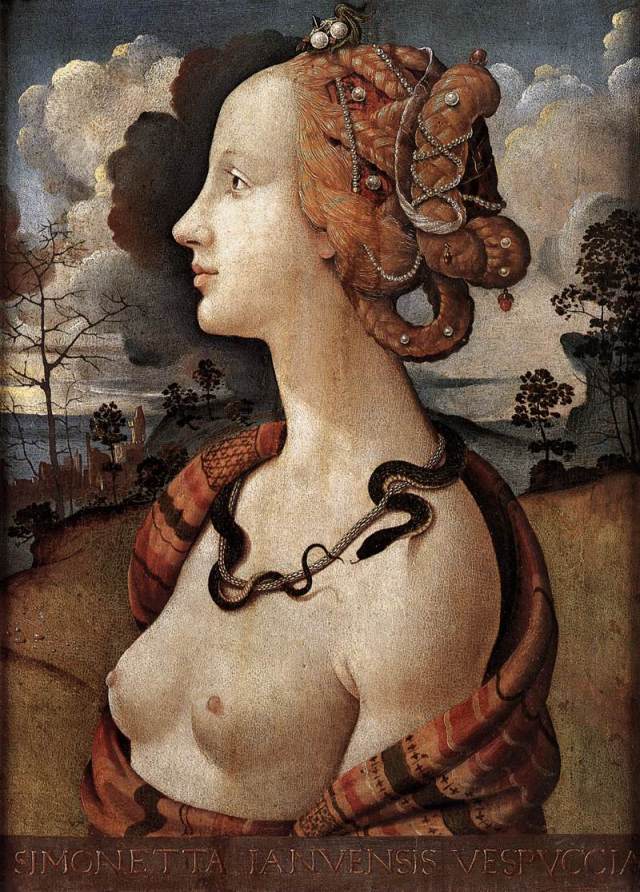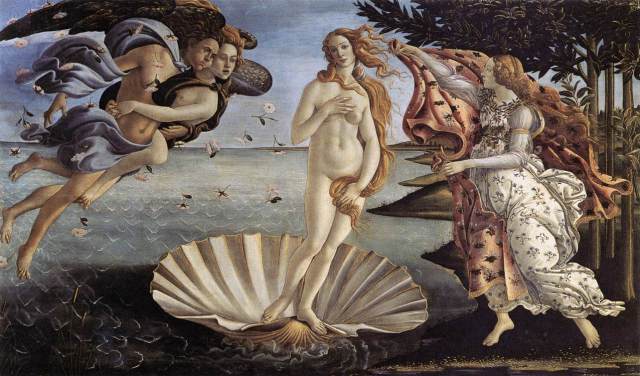Nikola Benin, Ph.D
This Sunday is International Women’s Day. Florence will be treating the ladies with yellow flowers (mimosas) and free access to all civic museums. Meg and I, at Florence for Free, will be celebrating by admiring the short, yet legendary life, of a favorite Florentine girl crush. Artists called her their muse, noblemen jousted for her affections, poets likened her to goddesses, and over 500 years later I continue to have serious hair envy (those braids!). Women wanted to be her and men wanted to be with her. She was the cover girl, the centerfold, the It Girl of Renaissance Florence. She was Simonetta Vespucci.
Simonetta Cattaneo was born to a noble Genovese family in 1453. While she was likely born in Genoa, her birthplace remains contested. Romantics claim she was born in Porto Venere, the legendary birthplace of Venus, as an appropriate foreshadowing for the work of art that would immortalize Simonetta. At the age of 15, she caught the attention of Florentine Marco Vespucci. With noble blood (ahem, Amerigo Vespucci) and close ties to the Medici, Simonetta’s parents were happy to wish the couple well and send their daughter south.
Simonetta’s arrival coincided with the arrival of the golden age of Florence. The poets, artists and humanists there had created a canon of beauty. Literally. The most prominent Renaissance Men got together and decided the rules of what makes the perfect woman. They thought that such a woman didn’t exist outside of their sketch books, poems, and wild imaginations–that is, until Simonetta arrived in Florence. She brought men of high culture and status to their knees. Her most prominent suitor was the young Giuliano de’ Medici, brother to Lorenzo the Magnificent.
Simonetta’s status as the It Girl of the Renaissance was solidified at La Giostra (jousting tournament) of 1475, when Giuliano arrived at the tournament parading a banner with Simonetta’s likeness. A French inscription on the banner read, “La Sans Pareille,” meaning, “The Unparalleled One.” The tournament not only introduced Simonetta to all of Florence, but more importantly, to the artist whom Giuliano commissioned to paint his banner–Sandro Botticelli. It was through this event that many believe Botticelli met his muse.
Simonetta’s premature death from tuberculosis, at the young age of 22, only seemed to add to the legend of her beauty. She was the Marilyn Monroe of the Renaissance. Through artists such as Botticelli and Piero di Cosimo, years passed but Simonetta never aged. She continued to appear as young and beautiful as ever in masterpieces years after her death.
Most notably, Botticelli memorialized Simonetta (all of Simonetta) as the goddess Venus in his capolavoro, The Birth of Venus.
(…making every art lover really really really want to believe that she was actually born in Porta Venere.)
With every Renaissance Man in Florence wrapped around her finger, our scandalous sides can’t help but speculate if any of Simonetta’s many suitors ever crossed the line of innocent admiration. With the assassination of Giuliano de’ Medici shortly after Simonetta’s death, no proof of an affair between the two was ever revealed. As for Botticelli, some art historians like to argue that the women in his paintings simply mimic the canon of Renaissance beauty rather than Simonetta herself. But how many times does a redhead with a narrow nose need to pop up in a Botticelli to prove a point? If that’s still not enough to convince you, look for the burial place of Botticelli. You’ll find him at the feet of Simonetta’s tomb in the church of Ognissanti–just as he requested. Yep, all signs point towards obsessed.
Although her life on earth was short, the legend of la bella Simonetta persists. Her beauty has been admired in the Renaissance masterpieces that she inspired for over five centuries. Ladies, we recommend you get in on our girl crush this Sunday by walking in the footsteps of the legendary beauty. Visit the Palazzo Medici Riccardi, where she married Marco Vespucci; Piazza Santa Croce, where she took the heart of a Medici prince; or Ognissanti, where even in death, Botticelli devoted himself to his muse.
To admire Simonetta yourself, it will take a few worthwhile euro for a trip to the Botticelli room of the Uffizi. How many times can you spot this Renaissance cover girl in the gallery? You’ll need at least both hands to count.





Няма коментари:
Публикуване на коментар